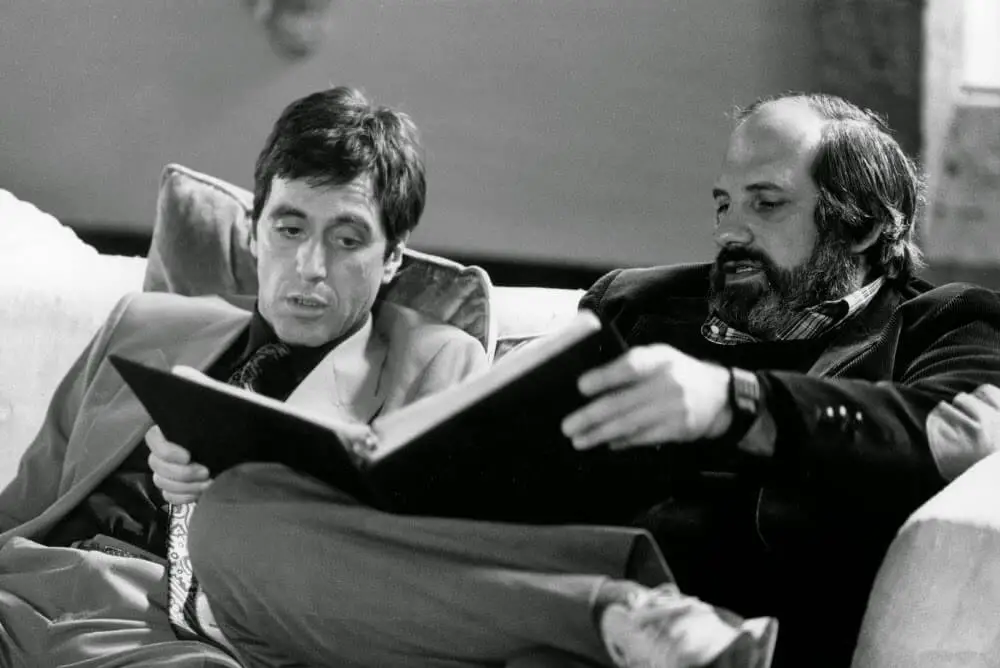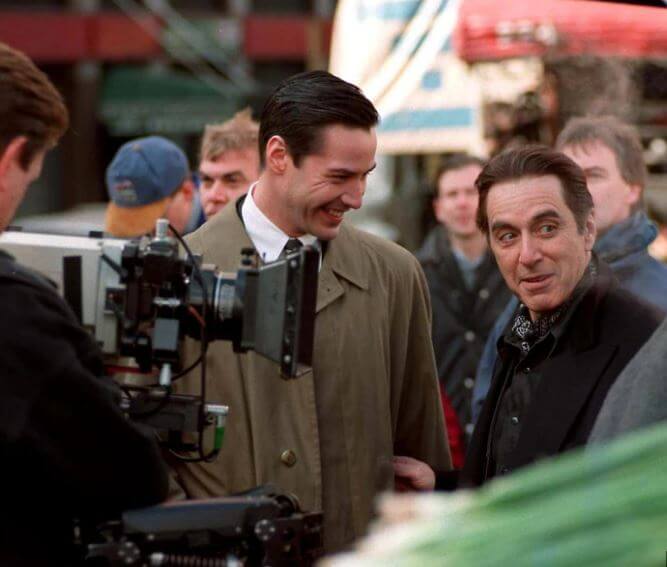Al Pacino’s Acting Tips: How To Bring Depth and Emotion To Your Performances
Al Pacino is a legendary actor who has won numerous awards for his performances throughout his career. His ability to bring depth and emotion to his characters has captivated audiences for decades.
Aspiring actors can learn a lot from Pacino’s approach to acting, particularly when it comes to developing their own skills in creating believable and powerful performances.
With a career spanning decades, Pacino has mastered the art of bringing depth and emotion to his roles. He encourages actors to draw from personal experiences and emotions to create authentic and believable performances.
Pacino also emphasizes the significance of active listening and reacting to fellow actors, fostering genuine and organic interactions on screen or stage.
Understand Your Character
A crucial aspect of effective acting is the comprehensive understanding of one’s character, which entails an unambiguous grasp of the character’s background, motivations, and personality traits.
To bring depth and emotion to a performance, actors need to explore the backstory of their characters, examining their life experiences, relationships, and struggles.
This process helps actors to understand the character’s behavior, reactions, and decisions, making it easier to bring authenticity and believability to their performances.
When actors have a comprehensive understanding of their characters, they can empathize with them, experiencing their pain, joy, and other emotions. This connection with the character’s emotions allows actors to bring depth and authenticity to their performances, making them more relatable and engaging to the audience.

Connect with Your Emotions
Establishing a strong emotional connection with the character being portrayed is crucial for actors seeking to deliver a compelling and authentic performance. To achieve this, actors must tap into their own emotional vulnerability, allowing themselves to feel what the character is feeling.
This requires self reflection and awareness, as actors must understand their own emotional responses and how to access them for a particular scene. Connecting with emotions also means being able to express them through physicality and vocalization.
Actors must use their bodies and voices to communicate the character’s emotional state, allowing the audience to fully immerse themselves in the story. This involves understanding the nuances of body language and vocal inflection, and using them to convey the character’s emotions in a subtle yet powerful way.
Use Your Voice and Body
In order to deliver a compelling performance, it is essential for an actor to utilize their voice and body effectively.
Developing a wide vocal range is one way to bring versatility to one’s performance, while using body language can convey emotions and add depth to a character.
Develop Vocal Range
Expanding the range of one’s vocal abilities is an essential aspect of developing the overall expressiveness and nuance of a performance. A performer with a limited vocal range may struggle to fully convey the depth and complexity of a character’s emotions, which can ultimately hinder the impact of a performance.
To improve vocal expression, it is important for actors to expand their vocal variety by practicing different vocal exercises and techniques regularly.
This can include working on breathing, articulation, and intonation, as well as experimenting with different accents, tones, and pitches. Developing a wider vocal range can also help actors to better connect with their characters and bring out more authentic emotions in their performances.

Use Body Language
Utilizing body language effectively can greatly enhance an actor’s ability to convey emotions and connect with their character, ultimately leading to a more captivating performance. Body language techniques can be used to communicate a character’s thoughts, feelings, and motivations without having to say a word.
One important aspect of body language is physicality, which involves understanding how a character moves and carries themselves. Actors should take the time to study their character’s physicality and make conscious choices about how they will move and use their body on stage or in front of the camera.
Here are four body language techniques that actors can use to bring depth and emotion to their performances:
- Use facial expressions to convey emotions and reactions.
- Pay attention to posture and movement to reflect a character’s personality and mood.
- Incorporate gestures and movements that are specific to the character’s background or occupation.
- Use physical touch to communicate intimacy, power dynamics, or emotional connections between characters.
Utilize Props
Incorporating props into a performance allows actors to add an extra layer of meaning and symbolism to their characters, enhancing visual storytelling and providing a visual representation of their thoughts and emotions. Props can help create a more immersive atmosphere for both the actors and the audience, adding depth to the scene and making it more believable.
Al Pacino believes that actors should always be exploring symbolism and finding ways to make their performances more impactful. Props are a great way to do this because they can be used to represent abstract ideas and emotions that might be difficult to express through dialogue alone.
For example, in the film “The Godfather,” Pacino’s character, Michael Corleone, is often seen holding an orange. This seemingly innocuous prop actually serves a deeper purpose, the orange symbolizes death and foreshadows the many killings that occur throughout the film.
As actors, it’s important to remember that every prop we use should have a purpose and help enhance the overall story we’re trying to tell. When working with props, it’s also important to remember that they should never overshadow the performance or distract from the scene.

Source-YouTube
Work with Your Scene Partner
Working with your scene partner is a crucial aspect of any successful performance. To achieve a compelling and authentic portrayal, actors must learn to listen and react to their partner’s cues, establish a connection, and adapt to their partner’s style.
Actors can create a dynamic and engaging performance that captivates their audience. It requires a certain level of empathy and understanding to effectively work with a scene partner, and mastering this skill can elevate an actor’s performance to new heights.
Listen and React
The technique of listening and reacting is a valuable tool for actors to convey authenticity and believability in their performances. Active listening allows actors to be fully present in the moment, focused on their scene partner’s words and actions, and respond from a genuine emotional place.
Here are three ways in which actors can hone their listening and reacting skills:
- Pay Attention To Non-Verbal Cues: Just as important as the words spoken in a scene are the non-verbal cues that accompany them. Actors should be attuned to their scene partner’s body language, facial expressions, and tone of voice, and respond accordingly. Doing so can help actors pick up on subtle emotional subtext and create a more nuanced performance.
- Allow For Emotional Response: Listening and reacting isn’t just about hearing your scene partner’s words; it’s also about feeling them. Actors should allow themselves to experience an emotional response to their scene partner’s words and actions, even if it isn’t explicitly stated in the script. This can help actors tap into their own emotional truth and create a more authentic performance.
- Stay In The Moment: It’s easy for actors to get lost in their own heads and lose focus on the present moment. To avoid this, actors should actively work to stay present and engaged with their scene partner. This means actively listening, responding truthfully, and staying aware of the nuances of the scene.

Establish a Connection
Establishing a strong connection with one’s scene partner is an essential aspect of creating an authentic and believable performance. Building rapport with one’s partner is crucial for actors to develop a genuine relationship on stage or screen.
It is essential to establish an emotional connection with one’s scene partner to create a believable performance. The audience can sense when two actors lack chemistry, and this can negatively impact the authenticity of the scene.
Building rapport and establishing an emotional connection with one’s scene partner requires active listening, empathy, and openness. Actors must be willing to be vulnerable and receptive to their partner’s emotions and reactions. This process requires a great deal of trust and respect between actors.
Establishing a strong connection with one’s scene partner requires the actor to be present and responsive to their partner’s needs. It is imperative to adapt to one’s partner’s style to create a seamless performance that is believable and authentic.
Adapt to Your Partner’s Style
Adapting to the style of one’s scene partner is a crucial aspect of creating a seamless and believable performance, as it requires the actor to be present, responsive, and respectful of their partner’s needs.
Adaptation techniques involve paying attention to the nuances of their partner’s acting style, listening to their cues, and adjusting their own performance accordingly. This requires clear partner communication and a willingness to collaborate and find common ground.
To successfully adapt to one’s partner’s style, actors need to be flexible and open-minded. They should be willing to experiment and try new approaches, while also being mindful of their partner’s preferences and boundaries.

Rehearse, Rehearse, Rehearse
Consistent practice and preparation through extensive rehearsal is emphasized as a key technique to enhance the quality of one’s performance. According to Al Pacino, rehearsing helps an actor to become more comfortable with the material, to develop a deeper understanding of the character and their motivations, and to explore different choices in performance.
Group rehearsals can be particularly beneficial as they allow actors to bounce ideas off one another, to receive feedback and constructive criticism, and to develop a sense of ensemble and trust with their fellow performers.
To emphasize the importance of rehearsal, a table can be used to illustrate the correlation between the amount of rehearsal time and the quality of a performance. The table could compare two hypothetical actors, one who rehearses extensively and another who does not rehearse at all, and the resulting difference in the quality of their performances.
Stay in the Moment
When it comes to acting, one of the most important skills to master is staying in the moment. This involves being present, reacting to the moment, and staying focused on the task at hand.
The ability to stay in the moment requires practice and discipline, but it is a crucial element in the craft of acting.
Be Present
The importance of being fully engaged and focused in the present moment is emphasized in the discussed section on enhancing one’s acting abilities. In order to bring depth and emotion to a performance, an actor must stay focused and practice mindfulness.
This means being fully present in the moment and giving your attention to the scene, your fellow actors, and your character’s emotions and motivations. When an actor is not fully present in the moment, their performance can come across as wooden or forced.
Practicing mindfulness and staying fully engaged in the present moment is essential for creating a believable and impactful performance.
Being present also allows an actor to respond authentically to what is happening in the scene. When an actor is fully engaged in the present moment, they can react to the other actors and the environment in a genuine and spontaneous way. This allows for a more natural performance that is not scripted or planned.
React to the Moment
Reacting authentically to the present moment is crucial for creating a dynamic and engaging performance that captivates the audience. Al Pacino believes that the key to reacting authentically is to stay present in the moment.
This means that actors should not anticipate or plan their reactions ahead of time, but instead, allow themselves to be fully present and respond in the moment. Pacino advises actors to listen carefully to their scene partner and react in a way that feels genuine and natural.
Reacting authentically to the present moment can add depth and emotion to a performance, as it allows the actor to tap into their instincts and emotions.
To react authentically, actors must also stay true to their character’s motivations and emotions. Pacino suggests that actors should avoid judging their character’s actions or emotions and instead embrace them fully.

Stay Focused
Maintaining concentration and avoiding distractions are essential components of honing one’s craft as an actor. Al Pacino stresses the importance of staying focused when developing a character and pursuing the character’s objectives. He emphasizes that actors must remain present in the moment and allow themselves to fully immerse in the scene.
To achieve a focused approach, actors should consider the following:
- Connect With The Character’s Emotions: Actors must understand the emotional state of their character and allow themselves to feel those emotions during the performance.
- Pay Attention To Details: Actors should be aware of their surroundings, their co-actors, and their character’s physicality, and use these elements to enhance their performance.
- Listen Actively: Actors must listen to their co-actors and respond accordingly to create a more realistic and engaging performance.
- Avoid Overthinking: Actors should trust their instincts and allow themselves to react naturally to the scene.
Take Risks
Exploration of unconventional approaches may enable actors to produce daring performances that convey a sense of authenticity and sincerity. Taking risks is an essential aspect of an actor’s craft, as it allows them to push their boundaries and explore new possibilities in their performances.
It involves stepping out of one’s comfort zone and embracing the unknown, which can be daunting but rewarding in the end. When an actor takes risks, they create a space for vulnerability and authenticity in their performances. They allow themselves to fully immerse in their characters and bring a sense of truth to their portrayal.
Taking risks in acting requires overcoming fear and self-doubt. It is important for actors to acknowledge their fears and doubts, but not let them hold them back. To overcome them, they can try new techniques, experiment with different approaches, and seek feedback from their peers and mentors.
Stepping out of one’s comfort zone is a continuous journey, and it requires a willingness to fail and learn from one’s mistakes. When an actor takes risks and embraces the unknown, they can create performances that are honest, nuanced, and unforgettable.
Last Words
Al Pacino’s acting tips provide invaluable guidance for actors aspiring to bring depth and emotion to their performances. Thoroughly analyzing the script can help in understanding their character’s motivations, and drawing from personal experiences, actors can create authentic and believable portrayals.
Active listening and reacting to fellow actors help establish genuine interactions, enhancing the overall realism of a scene. Pacino’s emphasis on vulnerability and taking risks encourages actors to push their boundaries, ultimately unlocking profound emotional depth in their performances.
Al Pacino’s illustrious career and his ability to connect with audiences on an emotional level serve as a testament to the effectiveness of these acting techniques.
With dedication, practice, and a commitment to authenticity, aspiring actors can learn from Pacino’s wisdom and bring their performances to new heights, resonating with audiences long after the curtains close or the credits roll.





4 comments
This is very true, in order to get a good perfomance on a movie, series o in a play, you must connect your emotions, things that happened in your life, some moments where you had to struggle and taste your character in life.
no one will forget the characters delivered by Al Pacino & these tips are from such a brilliant actor. worth referring.
I go with Pacino… modern day actors need to know how to bring depths and emotions to the movie art..
I strongly believe that if modern day actors learn to use professional body language, I believe this would raise their acting skills to a greater level